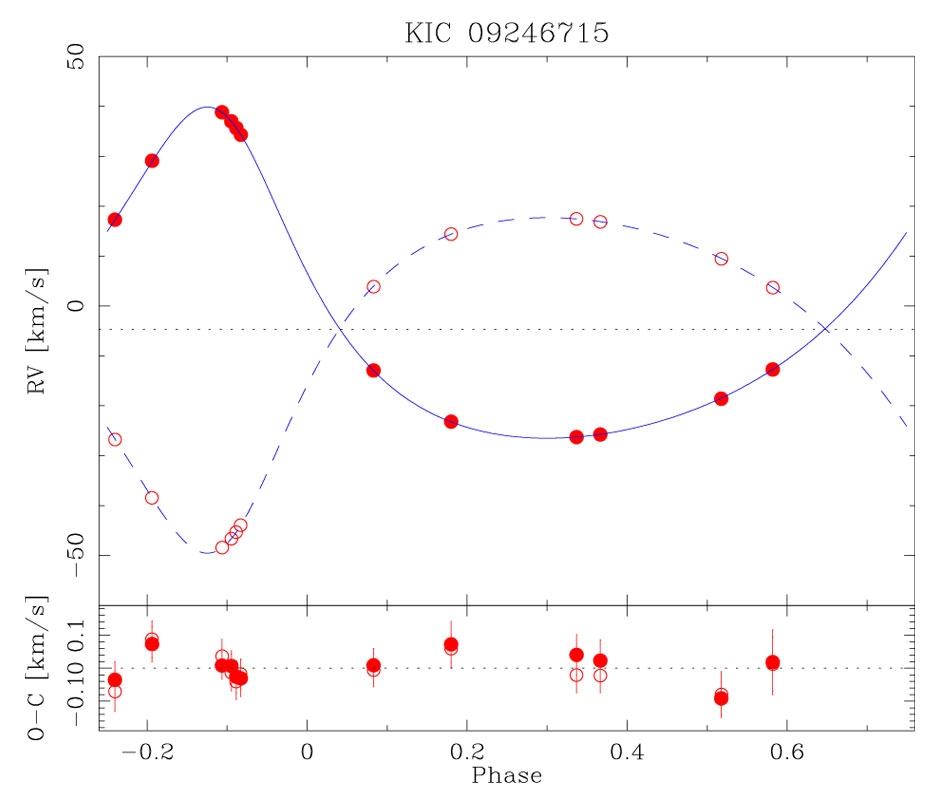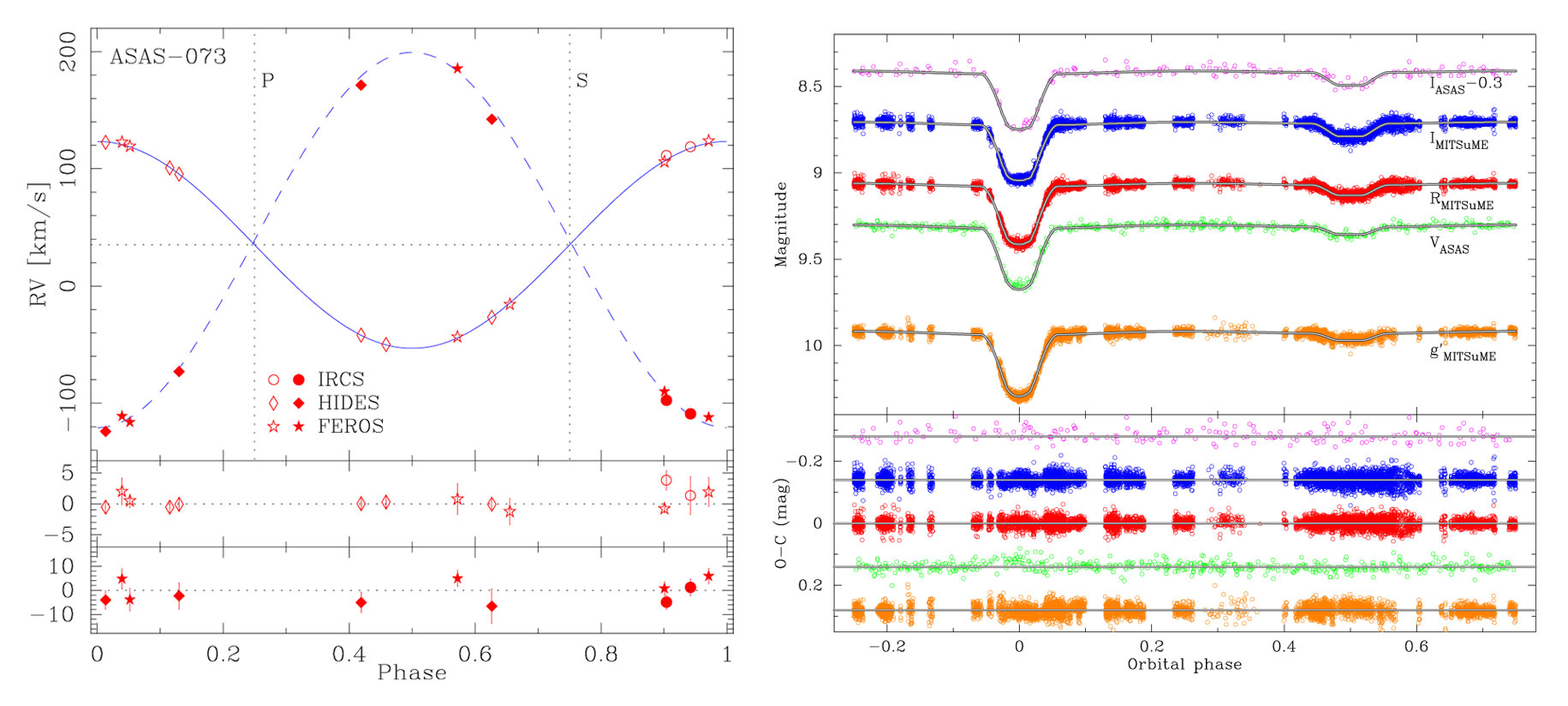- TOP
- 岡山天体物理観測所について
- 研究成果の紹介
- Radial velocity survey of detached eclipsing binarie
Radial velocity survey of detached eclipsing binarie

-
N. Copernicus Astronomical Center, Polish Academy of Sciences and Subaru Telescope, NAOJ [till 2016]
Krzysztof Hełminiak
Detached eclipsing binaries (DEBs) are pairs of stars orbiting each other and eclipsing periodically, but apart from that show almost no direct interactions. Since they do not interact, their components evolve as single stars, but thanks to the fortunate geometry, which results in eclipses, we can measure basic stellar properties, difficult or even impossible to obtain from single stars. One of them is mass, the most crucial parameter that determines life of a star. This makes DEBs one of the most important objects in astronomy. With new generation of high-resolution spectrographs, like HIDES, we are able to measure radial velocities (RVs) of DEBs much more precisely than several years ago, and from them calculate masses of stars with smaller uncertainty. Having precise masses (and other parameters) for a large number of stars not studied previously, was one of the goals of the RV survey of DEBs conducted with OAO-188cm and HIDES.
The survey started in 2014 and lasted till the end of 2017. It was a part of a larger project, initiated in 2011 in Chile. With HIDES we have collected over 1200 spectra of 100 DEBs. We focused on systems that show unusual characteristics or contain stars of rare or poorly studied classes. We have also focused on bright DEBs observed by the Kepler satellite, so we could take advantage of its exquisite photometry.
Observations of large number of stars lead to many discoveries. One of the first published results was an analysis of KIC 9246715 (Fig. 1). It is a system which contains a solar-type oscillator, a kind of pulsating star, for which is also possible to obtain masses and other parameters, applying methods of asteroseismology. For only the second time in history (at the time of publication), these results could be directly compared with parameters obtained directly from DEB analysis. Moreover, this binary turned out to be composed of two red giants, only the third one known in our Galaxy with parameters measured with such a good precision. Another interesting class of pulsating stars are so called γDor-type stars. Also in these cases, there are only several known examples of such stars in eclipsing binaries, and in our survey we have found another one – KIC 10031808.

Figure 1: Radial velocity curve of KIC 9246715, a Galactic eclipsing binary containing two red giants, one of which is showing solar-type oscillations.
One of the most intriguing cases was another Kepler eclipsing binary, that also includes a pulsating (hybrid δSct/γDor) object – KIC 4150611. From the satellite's observations we knew about four independent periods of eclipses, and a closer look revealed three point sources in high angular resolution images. HIDES observations helped to establish, that the two brighter sources contain at least five distinct stars, in a complicated configuration responsible for three out of four eclipsing periods. Thanks to the HIDES data we could also measure the properties of some of the stars and estimate the age of the system. It is still an open question where does the fourth set of eclipses come from, and how many stars are actually in the system. We suspect there could be up to seven, but observations continue.
The whole survey brought many more interesting results, that are still to be published. Among them are discoveries of new multiple systems, low mass stars, or pre-main-sequence objects. Our observations were also supplemented with photometry from the MITSuME telescope in OAO, for example for a sample of DEBs containing two very different components – a hot, bright primary star and a cold, small, red secondary (Fig. 2). Such systems are also quite unusual, and valuable for testing the models of stellar structure and evolution.
Analysis of all the data collected at OAO is ongoing and more results will be published in the near future.

Figure 2: Radial velocity (left) and light curves (right) of ASAS-073, a system composed of two very different stars. Observations include spectroscopic data from OAO-188cm/HIDES and photometry from MITSuME.

